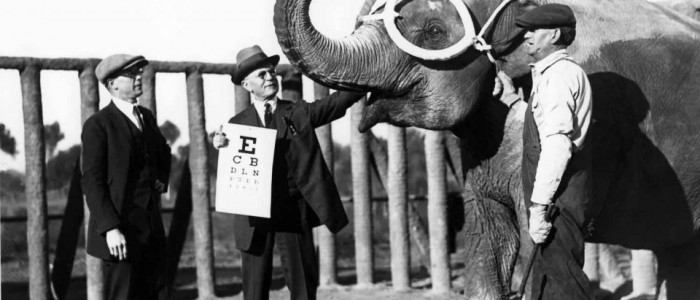Oregon Live: San Diego Zoo celebrates 100th anniversary this year
Reprinted from Oregon Live
The San Diego Zoo needs no excuse to celebrate, but this year the internationally-acclaimed attraction will be throwing a party in honor of a huge milestone – the zoo’s 100th anniversary.
The centennial celebration will officially kick off May 14 at the zoo, but an exhibition at the nearby San Diego History Center opens this weekend, giving visitors a deeper dive into its wild history.
“While nobody can compete with the San Diego Zoo on displaying animals, they are not a history museum and they do not have the space to display that story,” Matthew Schiff, marketing director for the center, said.
Instead, the zoo and the history center are collaborating on a 5,500-square-foot historical exhibition, “The Lore Behind the Roar,” that will be on display at the museum from March 20, 2016 through Jan. 31, 2017.
The exhibit tracks the San Diego Zoo’s cultural impact, from the 1915 Panama-California Exposition to the first video ever uploaded to YouTube – a 2005 clip called “Me at the zoo.”
Yet for all the relevance the zoo has today, its beginnings were anything but auspicious.
The Panama-California Exposition built scores of permanent and temporary buildings throughout the 1,400-acre Balboa Park (then called City Park), including a long row of animal cages holding wolves, coyotes, bears, monkeys, lions, bison, elk and more.
When the fair ended in 1917, organizers had planned to just let the animals out into the park and let nature take its course, but local physician Dr. Harry Wegeforth had other ideas.
Whether it was an act of kindness or opportunism, Wegeforth took over care of the animals with his recently-formed San Diego Zoological Society. The animals, they hoped, would be the beginning of a great city zoo.
With low funds and little support, the San Diego Zoo seemed like little more than post-exposition pipe dream, but throughout the next decade the zoo swiftly gained national and international recognition through its progressive and daring agenda.
When zoo leadership heard of “open-air grottos” replacing animal cages in Germany, they crafted their own – a bear exhibit that opened to the public in 1920, and a lion’s den in 1923. That same year they built a 95-foot-tall aviary, the biggest in the world at the time. In 1925 they hosted the first koalas in the United States and built the first ever artificial habitats for mountain goats. Two years later, executive secretary Belle Benchley became the first female director of a large public zoo.
“They were really ahead of the curve,” Schiff said. “They’re a global exemplar about how to run a zoo.”
Over the century the zoo grew to be known for its animal births, many open-air habitats and conservation efforts. It’s shouldered its share of criticism as well – from the sale of surplus animals to a Texas hunting ranch in the early 1990s to recent criticisms of its elephant breeding program – but has otherwise maintained a positive reputation, an improbable feat for an American zoo.
It’s also lived up well to the initial hype of the Panama-California Exposition, creating something San Diego can be proud of.
“The source of the zoo comes from a great deal of pride for San Diego,” Schiff said. “I don’t know how to put into words, but San Diego loves their zoo.”


Comments are closed.